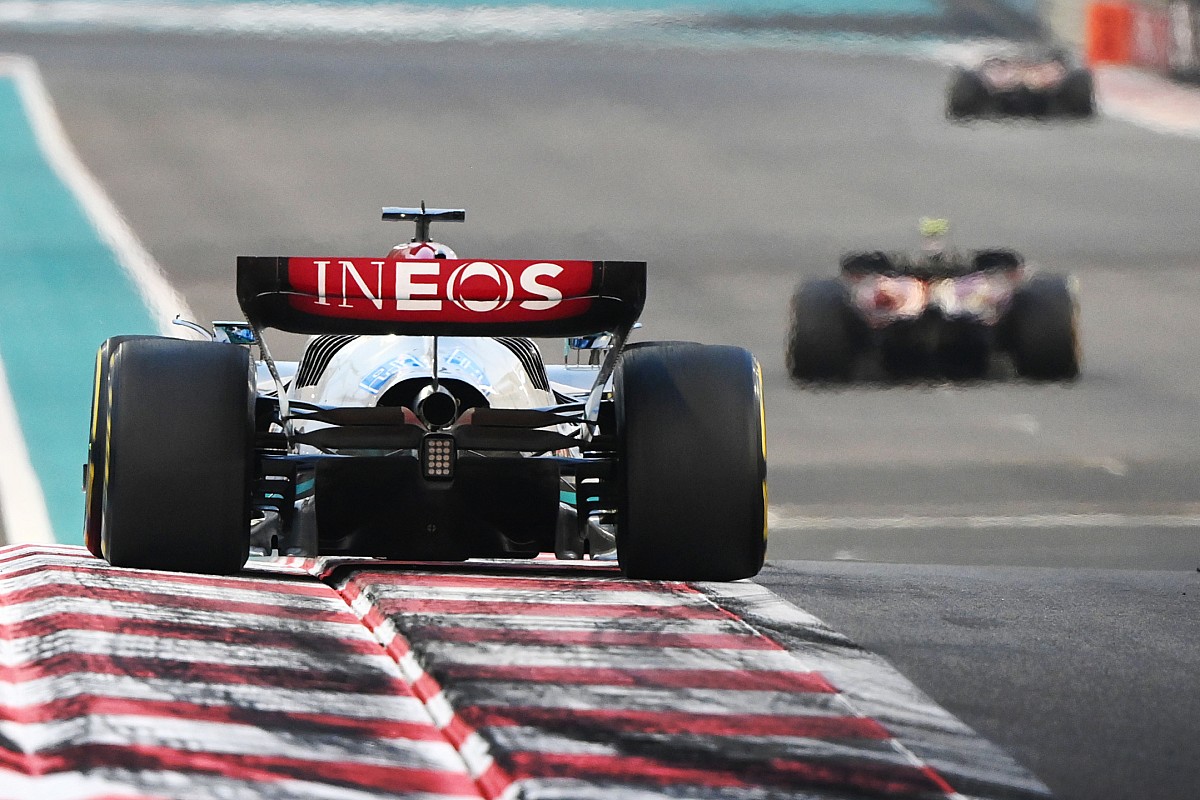
The new enforced concept called for a total rethink, given the upper section of endplate had been eradicated and a contoured transition was needed to join with the mainplane and upper flap.
The design constraints still allowed for numerous interpretations though, as teams sought to find a balance between the downforce they could generate, and the downside of drag being created.
As was the expectation, the spoon-shaped mainplane design was prevalent up and down the grid, as it afforded more leniency in the transition region.
However, as the season wore on, teams did start to become more adventurous.
Some opted for what would be considered a more conventional, flat profiled mainplane. Furthermore, we saw a significant investment in alterations to the shape of the upper corner of the endplate and wing tip, including the cut outs (or lack thereof).

Red Bull was relatively inactive compared to some of its rivals when it came to the development of its rear wing. It had a smaller suite of rear wing designs for the varied demands of each type of circuit and conditions on the calendar.

Where Red Bull did have more design variability was with its beam wing arrangement, as it not only optimised the design but also had different configurations at its disposal to help improve it set-up.
The Milton Keynes-based squad was also the first to employ the bi-plane style arrangement, with one element mounted above the other, with the more conventional arrangement only used when maximum downforce was required, such as in Hungary.

Ferrari, as would be expected, also had options available depending on the downforce level requirements for a specific circuit.
However, it also looked for ways to optimise its design too, in line with its progress around the rest of the car.
You’ll note the two different rear wing configurations used here in Canada, with Carlos Sainz utilising a higher downforce option and Charles Leclerc a new arrangement, with a focus on the shape of the upper wing elements, as well as the beam wing.

Mercedes approached its initial design a little differently, opting instead for an upturned leading edge in the central portion of the wing and a more tightly wound transition to the endplate.

The team quickly realised that the wing wasn’t going to provide the performance expected of it, and trimmed the upper flap quite significantly, using a Gurney on the trailing edge on several occasions as a way of helping to balance the car.

A low downforce rear wing first appeared at the Miami Grand Prix, which ditched the mainplane’s leading edge upturn, whilst the endplate transition was also loosened.

Similar tricks used in the earlier phase of the season were employed in the tail end of Mercedes’ campaign too, with the team trimming the upper flap and using a Gurney when needed to help balance the car.
The German manufacturer also had interchangeable panels in the wing tip section to help tune the downforce and drag required, with the team adapting the fully enclosed wing tip design first used by Alpine in Saudi Arabia.

Alfa Romeo incorporated an interesting design into the tip sections cutout (red arrow) to help achieve its drag and downforce targets under certain conditions, whereas it had a more traditional design to cover the other bases (inset).

Aston Martin won the award for the most novel rear wing design for 2022 with its rolled endplate extension, which defied the FIA’s regulations to create a faux endplate above the mainplane's surface.
No-one else followed suit, although rivals were likely glad not to have invested in the variant as the FIA outlawed it from 2023 onwards.

Aston Martin also had the most extreme rear wing design in Monza, with the team creating a twisted version of the spoon-shaped design.







